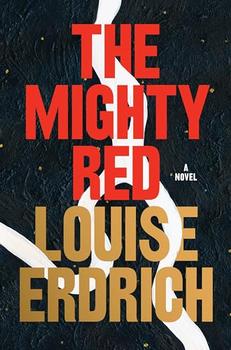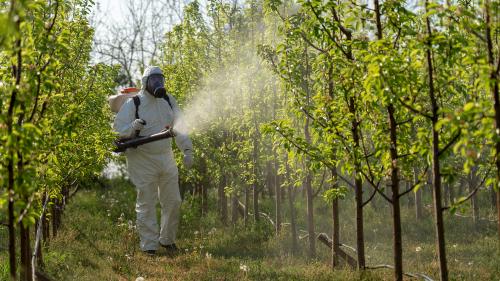Summary | Excerpt | Reviews | Beyond the Book | Read-Alikes | Genres & Themes | Author Bio

A Novel
by Louise ErdrichThis article relates to The Mighty Red
In Louise Erdrich's novel The Mighty Red, a rural community in North Dakota grapples with common problems facing agricultural centers—the bankruptcy of small farms and resulting consolidation into mega-farms; job loss and depopulation; and increasingly brittle economies and ecosystems damaged by monoculture.
 In Erdrich's story, the monoculture crop is sugar beets, one of the most nutrient-poor crops on the market. The largest farm in town has also moved to genetically modified Roundup Ready seeds, meaning their crops can be doused repeatedly with Roundup, Monsanto's trade name for the herbicide glyphosate. Roundup is supposed to kill the weeds competing with the beets; the problem is that the chemicals kill all other insect and animal life and turn the soil into a barren wasteland—dirt so empty of nutrients and structure that, in a memorable scene in the novel, it can't even absorb a few drops of beer. The desertification of the landscape they rely on is a metaphor for the characters' self-defeating choices. But it also reveals a critical real-world issue: that Roundup-resistant crops contribute to ecological and health damages.
In Erdrich's story, the monoculture crop is sugar beets, one of the most nutrient-poor crops on the market. The largest farm in town has also moved to genetically modified Roundup Ready seeds, meaning their crops can be doused repeatedly with Roundup, Monsanto's trade name for the herbicide glyphosate. Roundup is supposed to kill the weeds competing with the beets; the problem is that the chemicals kill all other insect and animal life and turn the soil into a barren wasteland—dirt so empty of nutrients and structure that, in a memorable scene in the novel, it can't even absorb a few drops of beer. The desertification of the landscape they rely on is a metaphor for the characters' self-defeating choices. But it also reveals a critical real-world issue: that Roundup-resistant crops contribute to ecological and health damages.
Glyphosate was introduced in 1974, and since then researchers have found mounting evidence that it causes cancer and has toxic effects on the nervous system. Despite the EPA's determination in 2020 that it poses no risks of concern to human health, studies have concluded that "Glyphosate disrupts the endocrine system and the balance of gut bacteria, it damages DNA and is a driver of mutations that lead to cancer." There are currently thousands of lawsuits over glyphosate and cancer working their way through the courts, with varying outcomes in favor of Monsanto or plaintiffs.
By planting Roundup Ready seeds, farmers are encouraged to apply ever-increasing amounts of Roundup to their fields, which is then absorbed by soils, waterways, and organisms. As with all herbicides, weeds develop resistance to repeated applications over time, reducing the effectiveness of the chemical while continuing to deplete soils and damage living organisms. In The Mighty Red, the weed lambsquarters develops resistance to Roundup and continues to flummox farmers. In real-world studies in Iowa, it's waterhemp. Across the Midwest, Purdue University researchers have found that giant ragweed has become resistant.
Alternatively, there are methods of integrated pest management that use biology and natural predation to keep weeds or insects in check. In addition to reducing the use of harmful chemicals, these methods break the evolutionary cycle of weeds developing chemical resistance. In The Mighty Red, for example, leafy spurge beetles are used to control the weeds they're named for. As one character muses, the beetles "controlled the weeds but never quite ate all of the spurge, never ate themselves entirely out of existence. They weren't like people. They respected their existential limits."
An image of a man spraying pesticides on a farm, courtesy of the Center for Food Safety.
Filed under Nature and the Environment
![]() This "beyond the book article" relates to The Mighty Red. It originally ran in October 2024 and has been updated for the
October 2024 edition.
Go to magazine.
This "beyond the book article" relates to The Mighty Red. It originally ran in October 2024 and has been updated for the
October 2024 edition.
Go to magazine.
Your guide toexceptional books
BookBrowse seeks out and recommends the best in contemporary fiction and nonfiction—books that not only engage and entertain but also deepen our understanding of ourselves and the world around us.